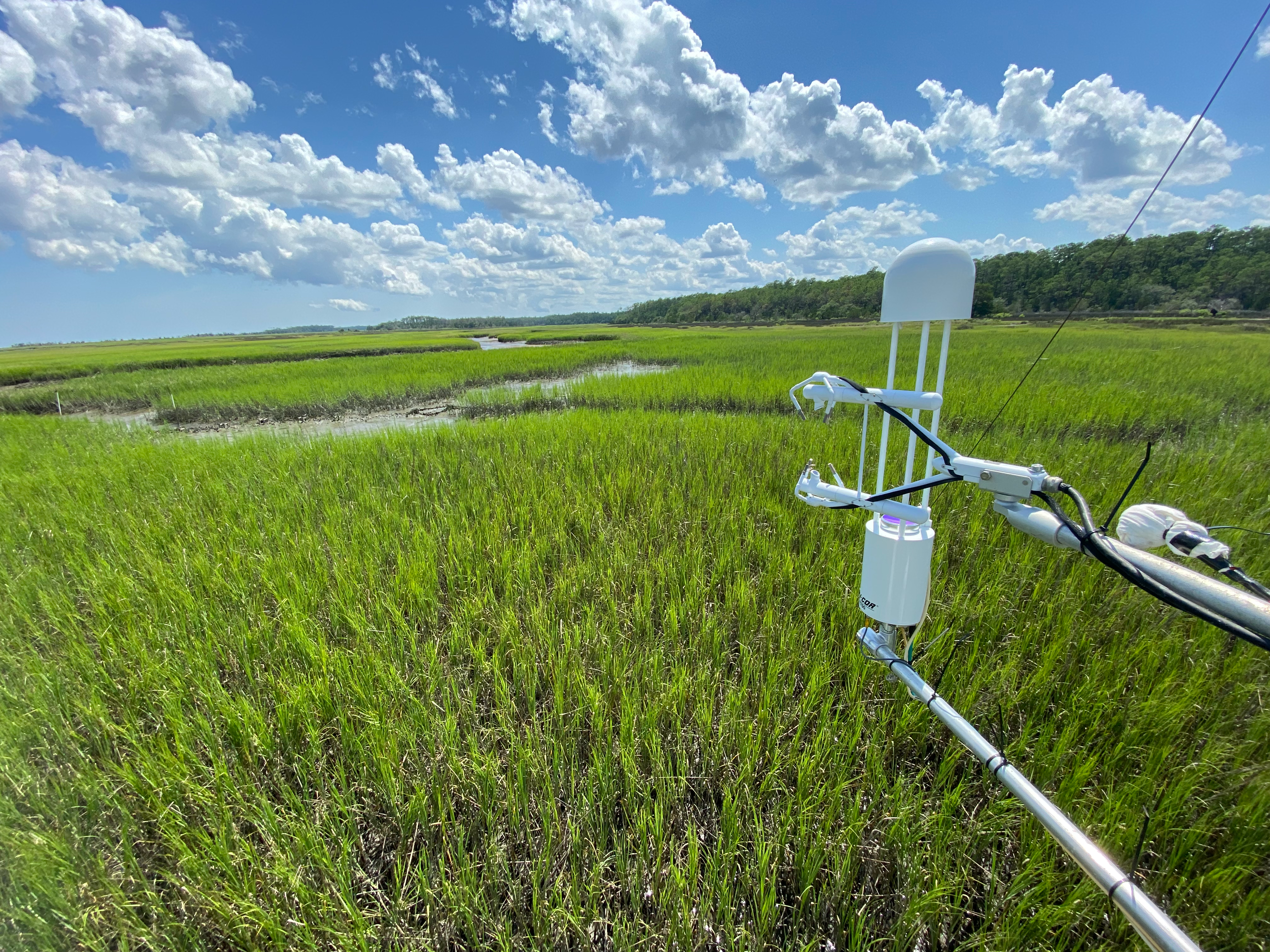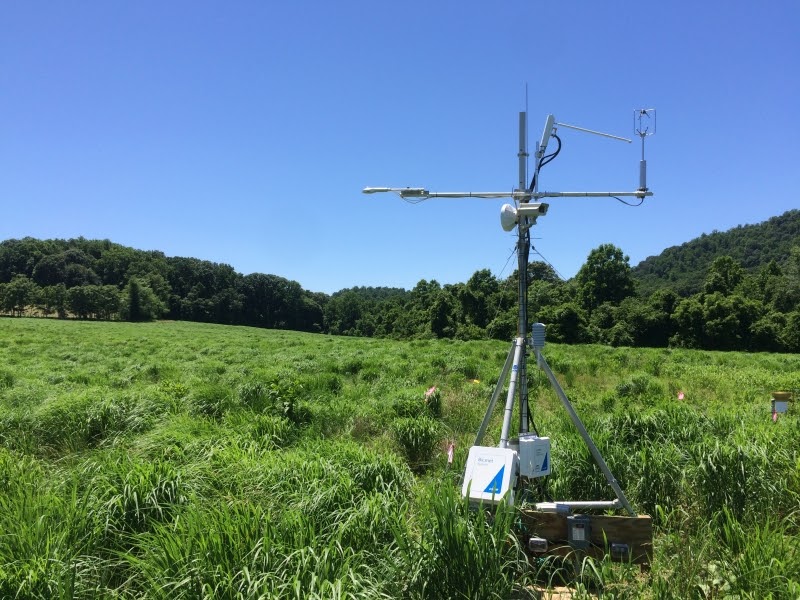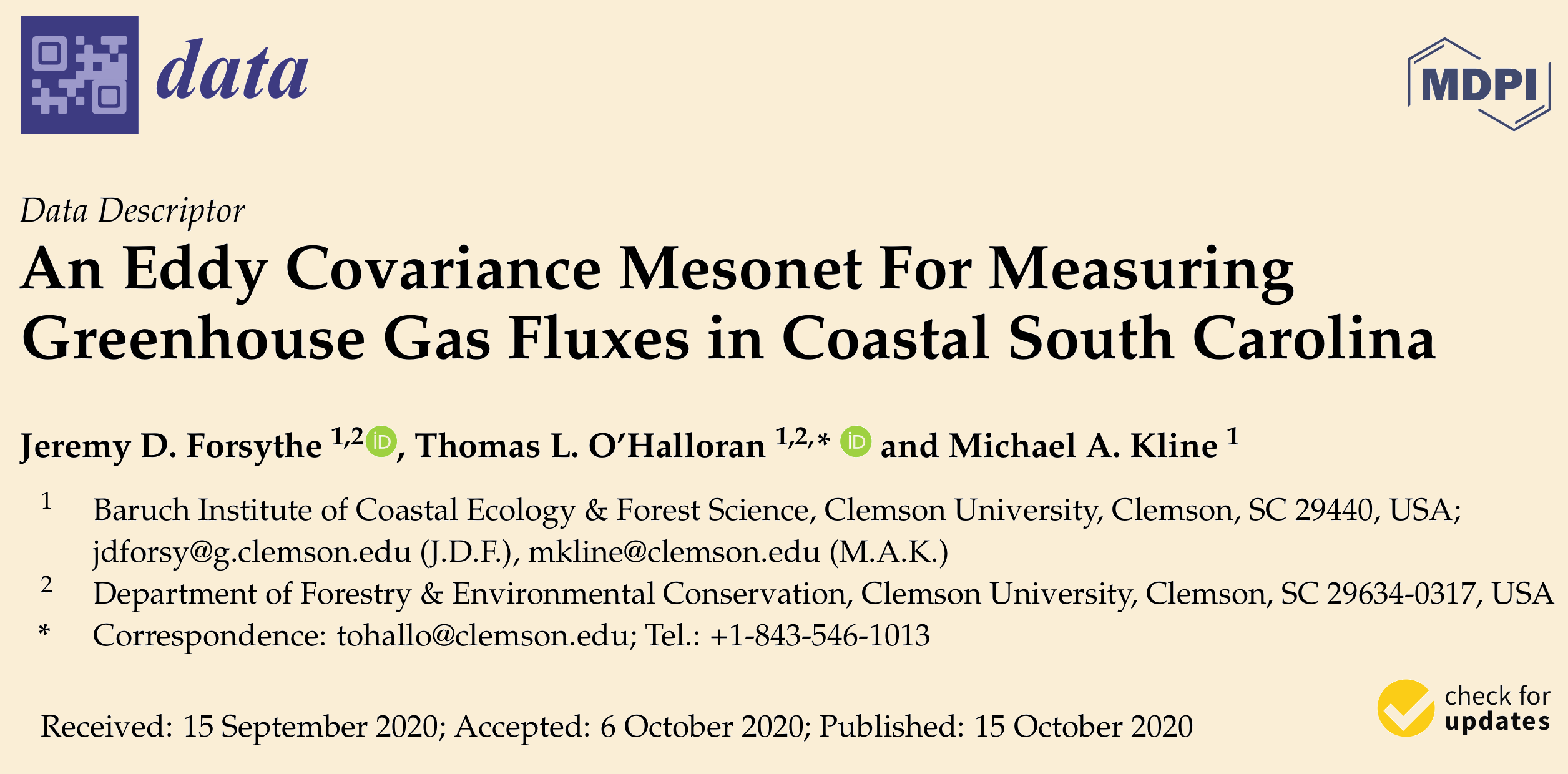Hello. I'm Jeremy, a Research Associate at NAU researching how fire and climate change affects the Arctic/Boreal region.
New Publication : A minimally managed switchgrass ecosystem in a humid subtropical climate is a source of carbon to the atmosphere.
New publication with our collaborators at Virginia Tech shows that our predictions of net carbon climate benefits from bioenergy crops cannot assume that the ecosystem will always be a net sink of carbon from the atmosphere. The importance of background climate, management, and land-use history, could determine whether widespread deployment of switchgrass as a bioenergy feedstock for climate change mitigation will truly achieve the desired outcome.
New Publication : An Eddy Covariance Mesonet for Measuring Greenhouse Gas Fluxes in Coastal South Carolina
My publication in MDPI data outlines the O’Halloran lab’s new eddy covariance mesonet with site, equipment, and data-workflow descriptions alongside some preliminary figures. Our coastal sites are somewhat unique in that there are highly productive upland forests alongside “blue-carbon” tidal salt marshes. The first year’s data has already been published to Ameriflux with more to come in the near future.



